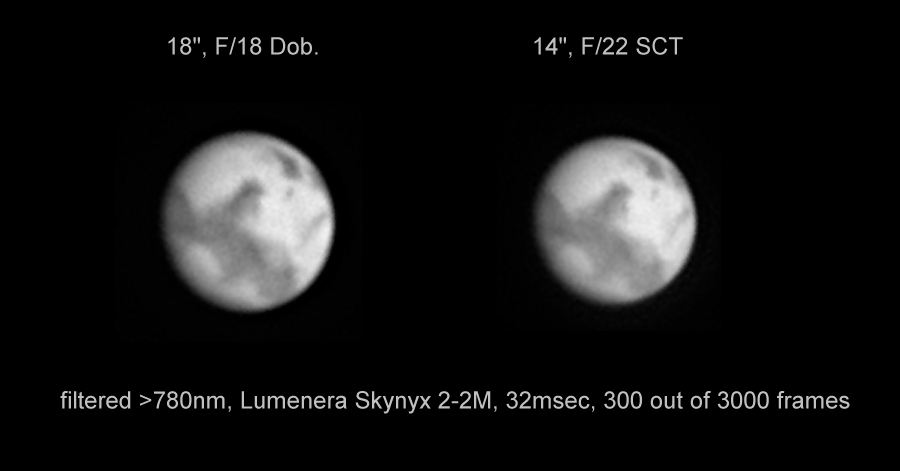

Conditions: poor seeing, pretty hazy, no wind, full moon
Setup: Celestron C14 telescope with 2x Televue powermate (f/22), Lumenera SKynyx 2-2M (with Schuler Ix infrared filter) and Lumenera SKynyx 2-2C (with IR reject filter) cameras
Processing (Registax, Photoshop): selected and stacked best 300 frames out of 6000, wavelet sharpening, color balance adjust, curves and levels adjusted.
Image was aquired with my astro-buddy, Michael Rask, at his great observatory. Exposure time for the infrared sequence was 32msec while it was 19msec for the RGB. Time delay between aquisition of the two sequences was 10 minutes, small enough to prevent noticeable shift of surface features due to rotation. Hence, I could produce our first combined IR-RGB image, using the IR surface contrast to enhance the RGB image. Too bad the seeing this evening was quite poor!
In addition to Michaels 14" SCT we also had access to an 18" Dobsonian telescope with motorized tracking. Below is shown a comparison of the images produced by each telescope. All camera aquisition settings and image processing steps are exactly the same. A 4x powermate was used on the Dobsonian while a 2x powermate was used on the SCT producing nearly the same image scale. On this evening of poor seeing there is no improvement in resolution from the larger telescope. However, the smaller central obstruction of the Dobsionian leads to a slighly better image contrast.

Here I'm setting up the huge Dobsonian with Michaels petite observatory in the background!

Here's my main page where you can see more of the pictures I have taken so far.
Comments greatly appreciated! (mikael@leif.org)